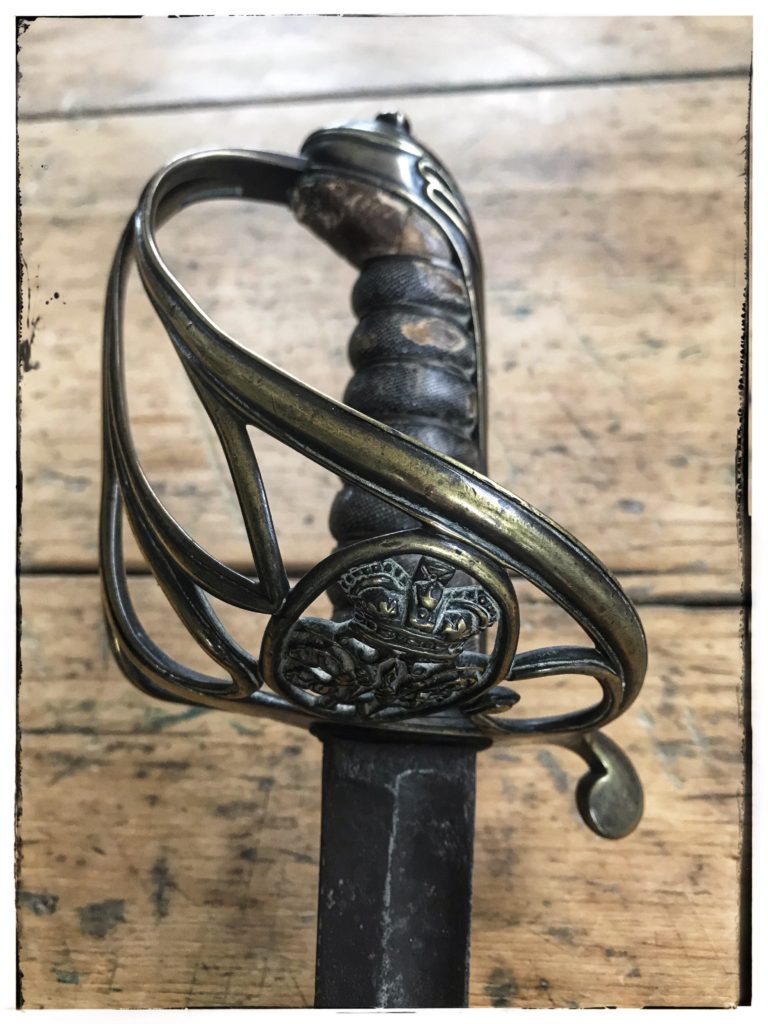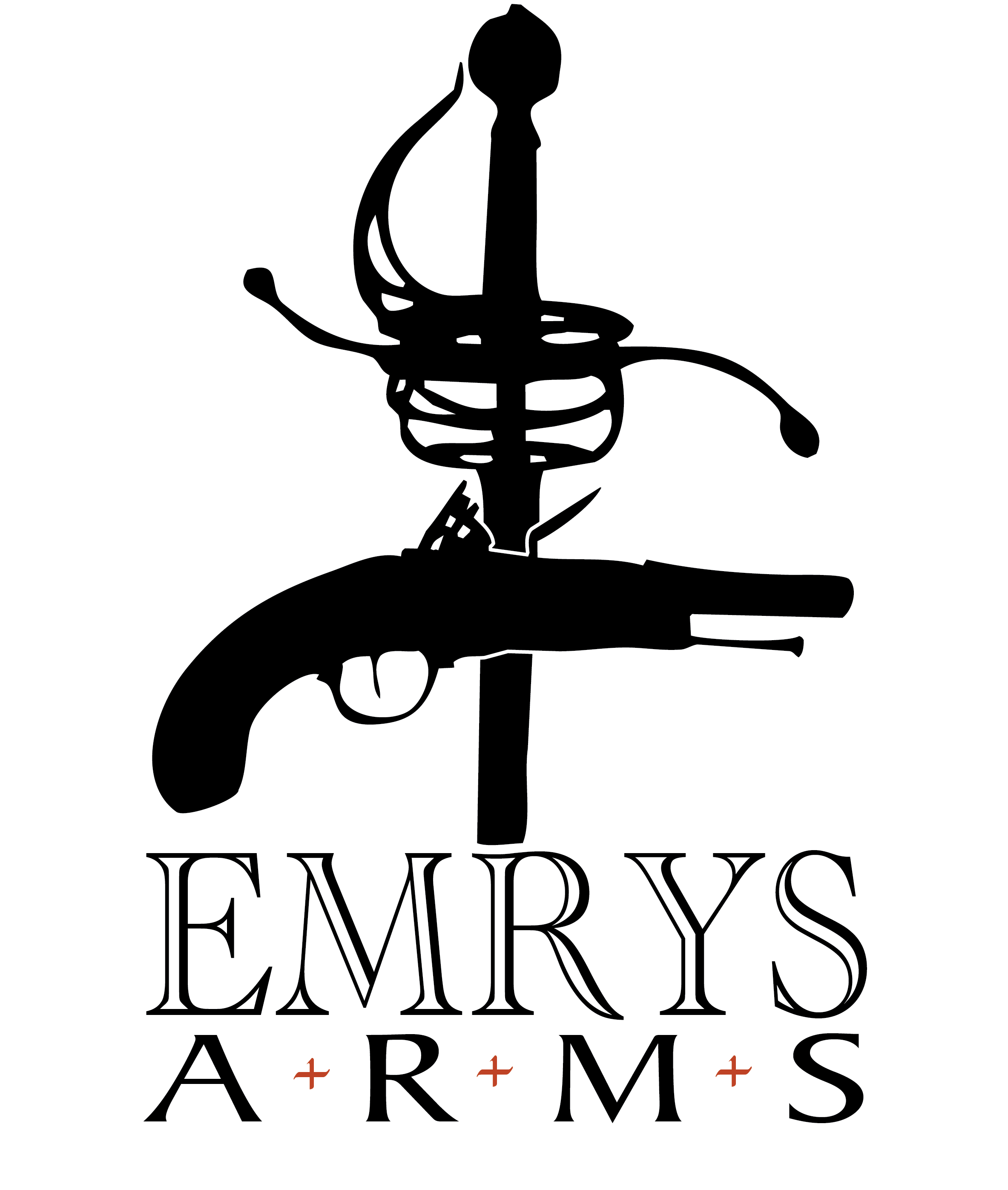| Collection #: | 2020.009 |
|---|---|
| Type: | Infantry Sergeant |
| Nationality: | British |
| Pattern: | 1822 |
| Date: | 1830 - 1837 |
| Hilt: | Brass |
| Blade Length: | 81.1cm (32") |
| Blade Width: | 2.9cm (1 1/8") |
| Overall Length: | 94.5cm (37 1/4") |
| Maker: | No Legible Markings |

A solid, but well worn sergeants version of the British 1822 pattern infantry officers’ sword. This example came from a collector in Devon, England who had acquired it from a collection which had been in storage since the 1970’s.
Very similar in appearance to the officers’ version, there are however some key differences. Brian Robson in his book Swords of the British Army, explains it very succinctly. “The sergeants’ version was, initially, indistinguishable from the officers’ sword except for having a plain blade and a brass as opposed to a gilt, hilt. But there also exist a number of Pattern 1822 swords in which the grip is of solid moulded brass and the blades are of an intermediate form between the pipe-backed blades and the fullered, Wilkinson design adopted in 1845 [see picture comparison below].The royal cyphers date these swords to the period 1822 – 1852 but their scarcity suggests that they could not have been introduced on a large scale and their use remains unclear.” ( page 213 )
This example bearing the royal cypher of King William IV places it in the period of 1830 – 1837. It has had a hard life and was possibly used until it was no longer serviceable. The blade is dark and pitted with heavy corrosion, but stabilized. The guard is beautiful with a nice warm patina, though remnants of old polish still need to be removed from the crevices. Another feature that seems to appear in the sergeants’ version is that it has a rigid guard, meaning the inner guard does not fold down as is typical on the officers’ version of the 1822 and 1845 patterns. The rigid guard was not made standard on the infantry officers’ pattern until 1854. The fishskin grip is worn and tired, but shows evidence of honest experience.
We use cookies to improve your experience on our site. By using our site, you consent to cookies. Enjoy the cookies...they're delicious...
Websites store cookies to enhance functionality and personalise your experience. You can manage your preferences, but blocking some cookies may impact site performance and services.
Essential cookies enable basic functions and are necessary for the proper function of the website.
Statistics cookies collect information anonymously. This information helps us understand how visitors use our website.
Google Analytics is a powerful tool that tracks and analyzes website traffic for informed marketing decisions.
Service URL: policies.google.com (opens in a new window)

